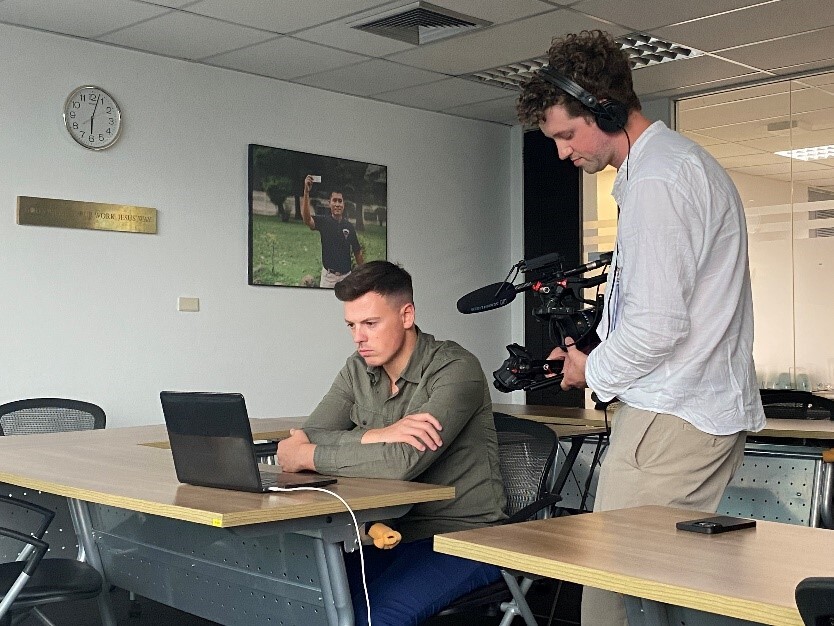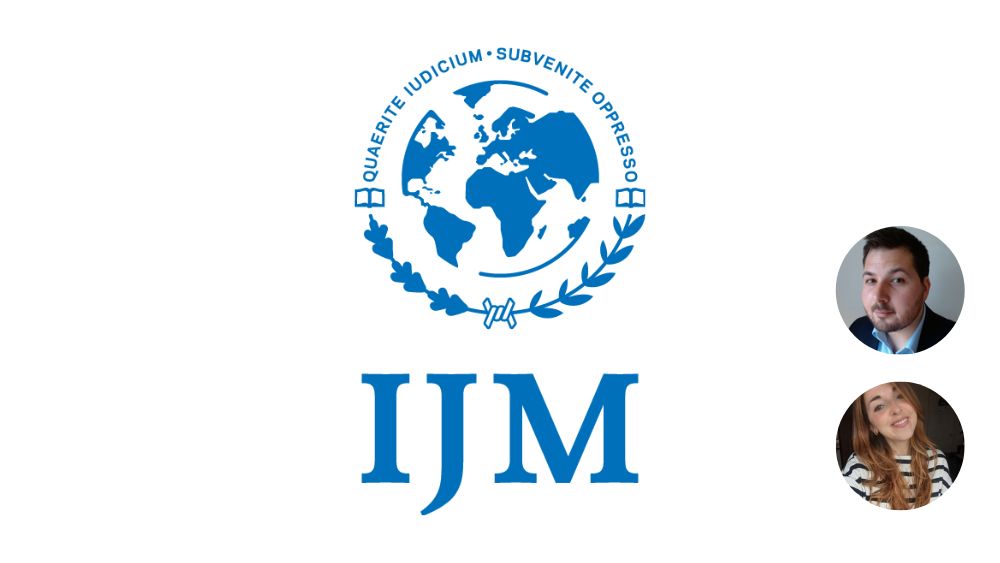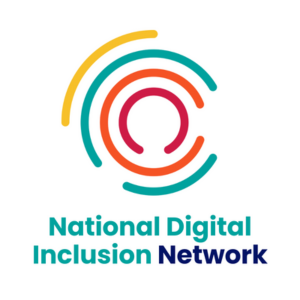Insights
INSIGHTS
All Topics
Charity Spotlight: International Justice Mission UK
We speak to Dean Gillespie, Digital and Mass Fundraising Lead at the International Justice Mission (IJM), and Abigail Sumption, Digital Marketing and Social Media Manager at IJM, to learn about how the charity is using digital transformation to help build a world where all are free
Content warning: The below article involves themes of modern slavery, human trafficking, and other areas that some readers may find distressing.
Charities are always striving to do the best they can to achieve their mission, and this requires resourcefulness, creativity, and adaptability. Meanwhile, digital continually provides new opportunities to do things more effectively – whether improving the experience of donation or telling the stories of those the charity exists to help.
International Justice Mission (IJM) is a global organisation working to stop slavery and violence. The charity works with local authorities to bring people to safety, support survivors with trauma-informed care, hold perpetrators to account, and strengthen justice systems so that people are protected in the first place. IJM has seen slavery decrease by up to 86% in places where they work.
We spoke to two of the charity’s passionate digital marketing professionals, Dean Gillespie and Abigail Sumption, to explore in-depth how the charity has improved fundraising during the cost-of-living crisis, how charities should implement digital changes, and the importance of digital transformation and storytelling in the charity’s mission to stop slavery and violence around the world.
Charity Digital (CD): How has International Justice Mission (IJM UK) been able to overcome a key digital challenge in the past?
International Justice Mission UK (IJM UK): Like most charities, raising funds from existing and new IJM UK supporters during an ongoing cost-of-living crisis has been and continues to be a key digital challenge. Over half of the British public have found it harder to donate due to their financial situation, a recent study by Enthuse reported, with 61% being more selective or giving smaller and fewer donations to charity.
Whilst it’s not been an easy season for us and many, in 2023, we were delighted that IJM UK achieved impressive year-on-year income growth in regular and one-off donations, driven strongly by new digital innovation and creativity. We want to share three digital methods we employed last year to significantly increase online fundraising:
Leveraging new digital technology to improve online donor experiences
This led to a remarkable increase in new regular donors. Implementing Fundraise Up, a new online donation platform, gave us a sleek, unified donation experience across IJM UK’s website. It allowed us to “upsell” regular giving throughout the donor checkout journey and integrate new payment methods (including Apple and Google Pay), providing supporters with more ways to give online.
As a result of our move to Fundraise Up, IJM UK’s digital fundraising campaigns last year recruited more regular donors (Freedom Partners) through our website alone than the total number of new Freedom Partners across all marketing channels in the previous year. This was a remarkable achievement and a huge win!
Using matched giving to incentivise supporters to give online
Securing donation matches from generous major donors for digital fundraising campaigns has proven extremely successful in driving new online donations – including regular giving. Whilst we’d done many matched one-off campaigns in the past, this year we matched regular giving for the first time.
By communicating the benefits of matched giving to supporters across digital channels, including social media, we were able to achieve our most successful regular giving appeal last year!
Compared to the previous year’s appeal, we saw an increase of 140%+ in the value of new monthly regular giving income and gained 23% more new regular donors. What’s more, the match also significantly increased the value of new regular donations, as the average new regular donation amount was much higher than in previous campaigns.
Optimising email fundraising with automation, personalisation and segmentation
By investing in a new marketing orchestration platform, Salesforce Marketing Cloud, we’ve been able to introduce large-scale automation across our fundraising, marketing and communications. This has greatly improved our supporter journeys through enhanced personalisation and targeted segmentation.
The platform has also given us more opportunities to test and learn through dynamic A/B testing. These features, alongside improving our email structure and opting for single calls-to-actions (CTAs) for every single email, have not only led to incredible results in terms of email open and click—through-rates but record levels of income from email marketing.

Example of lJM UK’s handraiser with a personalised lead generation platform integrated with Fundraise Up. Image credit: Forward Action
CD: What has been the process for developing and executing your current digital roadmap?
IJM UK: Let’s press rewind. Before our digital roadmap was in place, we identified that one of our key areas for improvement was to ensure that our digital marketing and communications were fully integrated with our customer relationship management (CRM) platform.
Investment in these technological advancements was essential if we were to grow as an organisation and increase digital fundraising, attract new supporters, and enable better automation and personalisation to retain our current supporters.
Enter a digital roadmap with a big vision, and clear steps to get there. Here are some of the key steps we took which proved successful.
Step 1: Undertake a digital audit
Before drawing up a new roadmap, we needed to undertake a digital audit to examine where we currently stood, utilising lessons from the Charity Digital Code of Practice.
Starting with a deep dive into our organisational data, we analysed trends over time relating to major key performance indicators such as online donations (regular and one-off), main channels for digital donations, email subscriber and click through rates, and social media audience growth, engagement rates, and website conversion rates.
On top of this, we examined current digital processes, procedures and platforms and interviewed staff across the organisation to identify current digital pain points and areas for improvement.
Step 2: Develop key objectives by reviewing trends and current performance
Next, we needed to understand how the digital landscape was changing and what IJM UK could learn from these trends for organisational growth.
For example, we noticed the increasing shift towards first-party data acquisition to enable more personalised supporter journeys. We’d heard about online lead generation techniques such as handraisers as ways to do this, and seen strong evidence of how well-automated, well-optimised email marketing platforms could better convert leads. We also saw the growing demand (even expectation) from current supporters for better user experiences with seamless navigation, intuitive interfaces, and fulfilling interactions across websites.
Utilising these digital trends, we were then able to identify key goals and objectives for our digital roadmap as well as review our current digital performance in light of charity sector benchmarks. In this respect, M+R’s UK Digital Benchmarks were an invaluable resource for us and something we’d recommend for all digital fundraisers and marketers when developing their own roadmaps.
Step 3: Identify the building blocks you need and communicate regularly with stakeholders
Once we’d analysed our performance, reviewed the sector trends, and identified the pain points in our current platforms, we began to search for solutions.
We had identified that we needed a new marketing orchestration platform (Salesforce Marketing Cloud) and knew that any donation platform would need to be fully integrated with it. It was vital that we got buy-in and feedback from staff across the whole organisation – that’s why we set up cross-functional teams and updated colleagues regularly.
This high level of communication ensured that everyone knew what we were doing, why we were doing it, and had confidence in the decisions we were making. After research and comprehensive internal discussions, Fundraise Up looked like our ideal solution: an optimised donation platform with in-built machine learning run by an entrepreneurial start-up team.
Step 4: Implement your roadmap with clear feedback milestones and demonstrate return on investment
In order to implement our roadmap effectively, we needed to clearly present how our strategy would work –so we mapped out budgets, internal stakeholders, timelines, expected return on investment (ROI), and the external suppliers/agencies we would partner with.
Throughout the implementation stage, it was essential that we ensured key stakeholders were informed of current developments and that we regularly communicated on key milestones and wins achieved.
In fact, in the month following implementation of our new donation platform, we had a 92% increase in the value for one-off donations and a 203% increase in the volume of new regular gifts, compared to same period in the previous year.
Strategically, it was also vital to demonstrate a clear ROI on the different aspects of the digital roadmap – not only to review performance and success but to better ensure future investment in digital transformation and innovation.
CD: What advice do you have for other charities looking to implement digital changes?
IJM UK: Be bold. Be ambitious. It’s so important to present a powerful vision at your charity about how digital can transform your whole organisation and build a culture of continual digital testing, experimentation, and learning. Don’t underplay the significance of digital transformation - why it’s essential for financial growth, operational effectiveness, and long-term organisational success.
But – like most things in life – not everything goes exactly to plan all the time, so it’s crucial to notice where things aren’t working as hoped, and be agile, not being afraid to stop that approach and try something new.
When considering digital changes such as new platforms or software, it’s essential to think about wider integration across your organisation. This is because a new digital platform or change will not only affect other existing platforms (the data flows and connection points between them, for example) but also the way people work.
It’s vital not to underestimate the niggles which might occur in transition periods between new platforms, or to deny the necessity of working cross-functionally or the importance of enabling regular, clear feedback loops between teams.
CD: What is the impact of sharing online stories of your work with your supporters?
IJM UK: We love sharing stories online! We’ve had great success using online and digital channels to share IJM’s work and we are particularly passionate about working with survivors of violence and trafficking who want to share their experience and expertise, as they lead the way in showing why stopping slavery and violence matters.
This amplifies the powerful messages that they want to share. Some of the campaigns that we’ve worked together with survivors to design have attracted international and national media coverage. For example, IJM partnered with Meta, alongside Agape International Missions (AIM), A21, and Every Child Protected Against Trafficking (ECPAT) for “Break Free to Fly”, a cutting-edge augmented and virtual reality paid advertising campaign helping users to understand sex trafficking and how to help stop it –reaching over 27 million views.

The “Break Free to Fly” campaign. Image credit: Jacqui J. Free-Sze
Most recently, IJM’s work was featured in the BBC’s documentary, ‘Hunting the Catfish Crime Gang’, highlighting IJM-supported survivor Gavesh*’s story, and our work to stop the emerging international crime of forced scamming, which will be featured online on iPlayer until October 2024.
By using social media and influencers to leverage this powerful documentary, we saw thousands more people, from predominately new audiences, engaging with us online.
Stories of real lives and IJM’s impact, told with dignity and hope, are foundational in IJM UK’s communications. Storytelling is something we are passionate about. Our supporters care deeply about this too.
Our website donation platform asks donors their “reason for giving”, and from all of our online donations over the last year, email wins hands down. Email, where we regularly share survivor stories and our frontline work, ranked highest both by the number of new donations (34%) and the value of donations raised (25%).
*pseudonym

BBC documentary, ‘Hunting the Catfish Crime Gang’
CD: What does the future hold for digital at International Justice Mission UK?
IJM UK: In the next stage of our digital roadmap, we’re looking to continue to grow online fundraising through significant website improvements. We’ll be undertaking a period of detailed testing and learning with supporters through surveys, interviews, and A/B testing to better understand how people interact with us.
We’re hoping these tests will give us new recommendations to help re-design our website and increase conversion rates across one-off, regular, and peer-to-peer fundraising, and keep us in line with the latest best practices too. We’re also hoping to keep upskilling staff in digital across the whole organisation.
And here’s what makes us determined to get digital transformation at IJM right: the numbers of people trapped in modern slavery are increasing – from 40 million to 50 million in the most recent International Labour Organisation estimate.
Changing climates, global conflicts, and developments in technology are putting millions at risk, as traffickers innovate to exploit and trick people. We’ve seen first-hand how abusers can use tech to harm and exploit people, but we know we can also use digital for good.
We’re encouraged that IJM has seen huge breakthroughs in stopping slavery and violence around the world, including decreasing child trafficking by up to 86% in places where we work. Plus – last year alone – IJM worked with police and partners to bring over 9,100 children, women, and men to safety from violence.
We cannot stop slavery and violence alone, but through digital transformation and innovation, we can mobilise more and more people to join the global movement, building a world where all are free.
Learn more about International Justice Mission UK’s work
Click above to learn more about International Justice Mission UK’s work to stop slavery and violence
Josie Sparling
More on this topic
Related Content
Recommended Products
Recommended Products
Featured Products
Our Events
Q&A session: An introduction to Microsoft Copilot
Join us on the 14th of May for our Q&A session. It will provide a whistlestop tour of Microsoft Copilot’s key capabilities, how they can help charities, and answer all your burning questions around Microsoft’s AI service.
We use cookies so we can provide you with the best online experience. By continuing to browse this site you are agreeing to our use of cookies. Click on the banner to find out more.



















